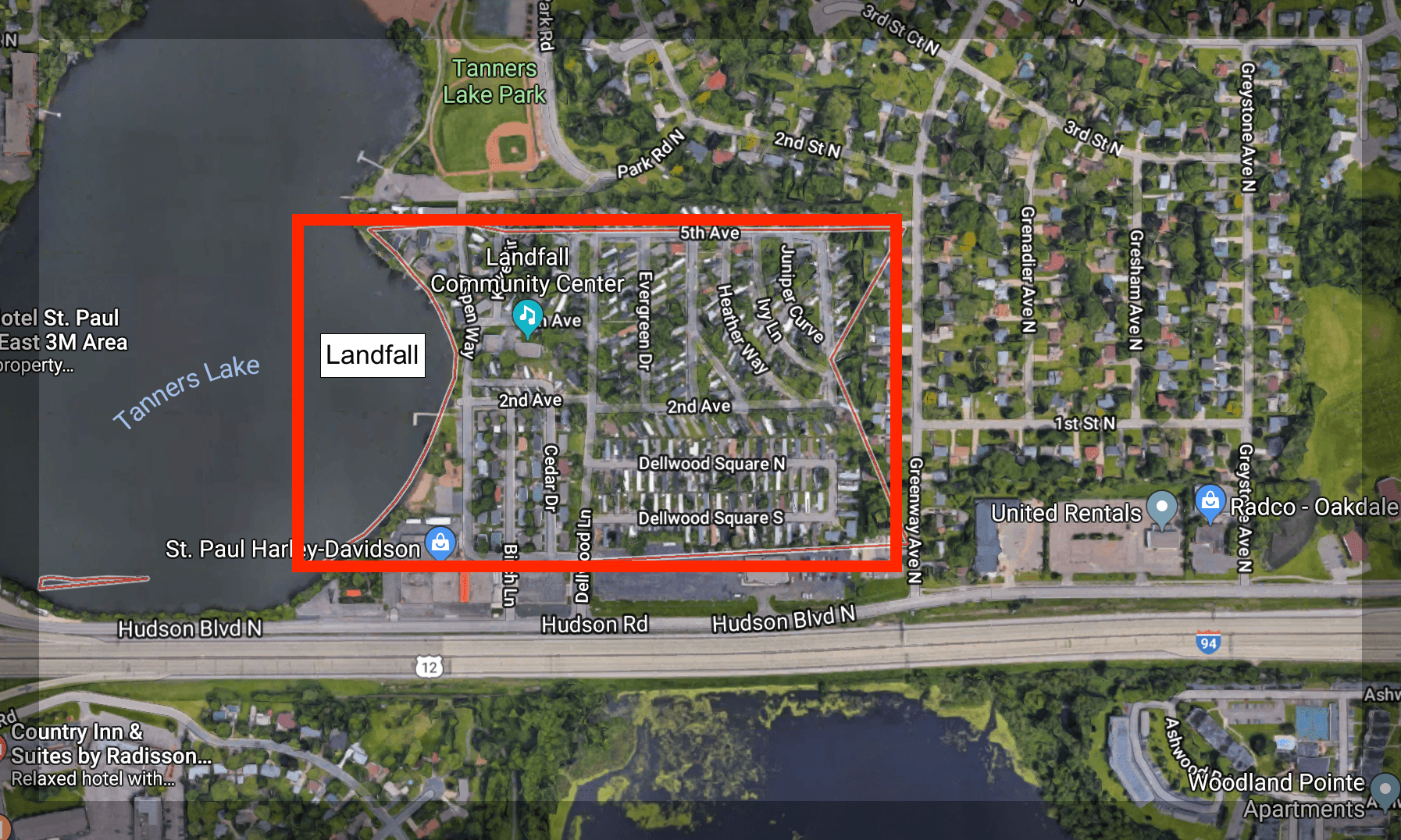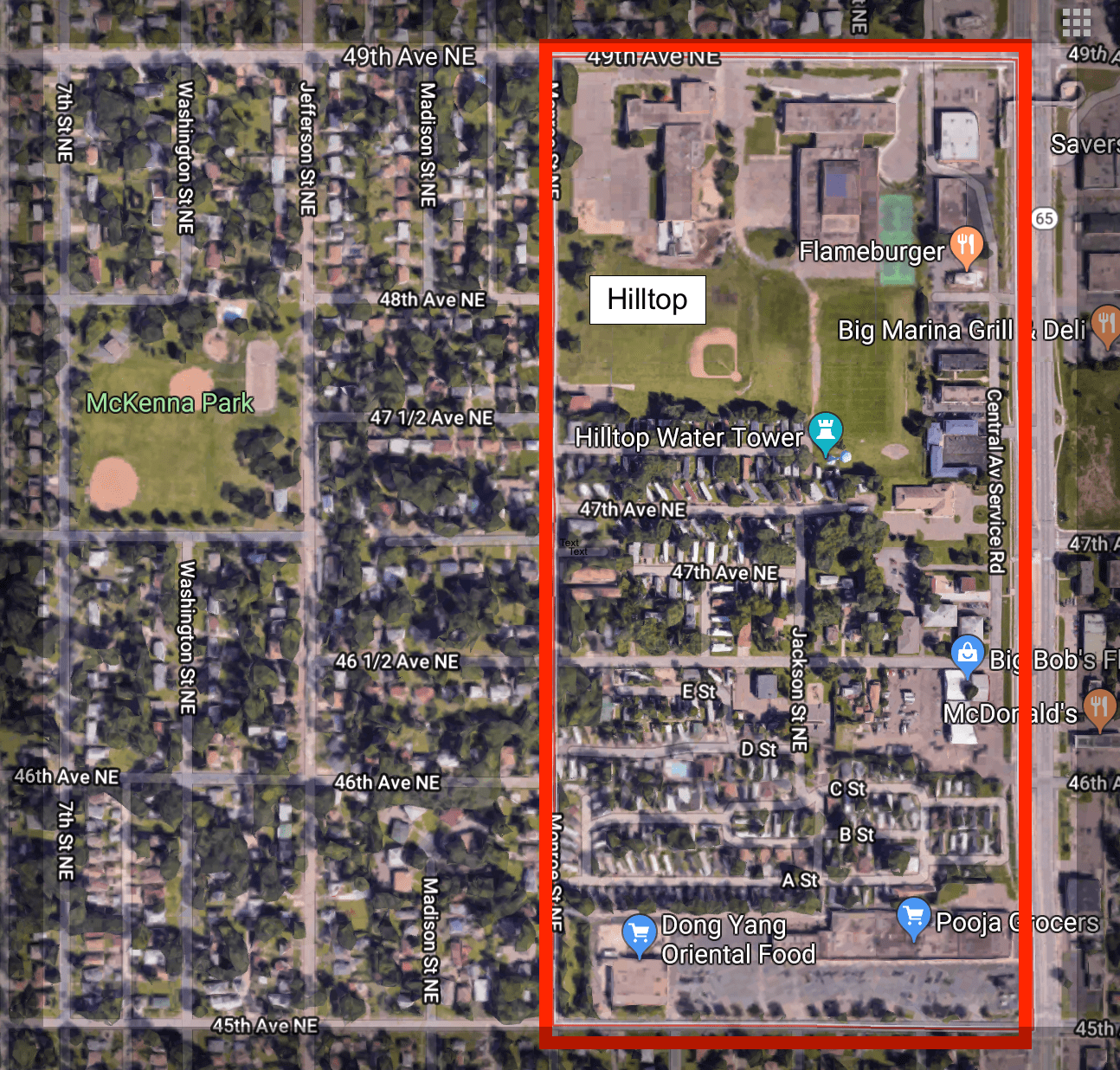The Other Affordable Housing Option
This week, Urban3 is in the midst of a consulting project for the city of Minneapolis, and, as a result, we’ve had a lot of Minnesota maps flying around our office, where I'm working this summer. These maps have the primary function of visualizing a city’s financial data, but they often shed light on anomalies within a region as well. This time, we stumbled upon two curious little cities unlike any other in the United States: Hilltop and Landfall, MN.
Hilltop and Landfall are America’s only cities consisting almost entirely of manufactured housing, i.e. trailers. These tiny tracts of land, less than a tenth of a square mile each, house hundreds of people in extraordinarily fine-grained suburban density.
Their early histories mirror the general history of mobile home dwelling; returning veterans from World War II created a demand for affordable housing at the undeveloped periphery of growing urban areas, and booming domestic manufacturing answered the call with manufactured housing.
Yet while many trailer parks were swallowed by bordering cities that favored the more common single-family suburban development pattern, local leaders and landowners in Hilltop and Landfall took a stand by electing to incorporate themselves as independent municipalities. In doing so, they incidentally made themselves a unique control group within the wider pattern of suburban experiment.
Here’s a satellite view of these cities, courtesy of Google Maps.
These photos illustrate the comparisons between these dense developments patterns and those of their neighbors. It’s a juxtaposition that puts the impact of zoning in plain sight. You can explore the cities yourself in Google Maps.
It’s a marvel that these communities have survived for so long, enduring dramatic legal skirmishes along with the typical troubles of manufactured housing communities like higher crime. They operate many of their civil services in agreements with neighboring cities and counties, but each employs one full-time City Manager.
In an interview with City Pages, longtime Hilltop City Manager Ruth Nelson talks about her pride for her community. "Convenience and affordability are the two big reasons why people come here," she says, "but the independence, privacy, and sense of community are the reasons people stay. Despite what people think, there is nothing mobile about the homes and nothing transient about the population.”
The homes have wheels in order to conform to federal housing regulations, but the residents aren’t going anywhere; the community estimates an annual turnover rate of only 5%.
“People tend to stay long enough to get to know each other," Nelson continues. "This is a town where everyone pretty much knows everybody else, certainly much more so than in a suburban neighborhood. And the location is convenient; we're right on a bus line into the city, and there's stuff going on all around us that people can walk to if they want. It's a good place for people who are just starting out, and it's easy and comfortable for seniors who are on their own."
Walkability, access to transit, sense of community, affordability… It sounds like manufactured homes could answer the prayers of many an urbanist. These communities certainly aren’t for everyone, but for lower-income households who don’t want to live in an apartment complex and don’t need too much space, manufactured housing remains a viable option.
This line of thought invites an apt comparison to the Tiny House Movement. There aren’t that many differences between tiny houses and manufactured homes beyond the apparent aesthetics. Crucially, tiny houses are built using traditional on-site building methods, making them more durable and energy efficient. However, manufactured homes can appreciate in value just like traditional homes (of any size) when property sited and maintained.
So, what’s next for these scrappy little cities? Nelson says the parks will continue to exist for as long as the landowners want them to. The demographics have gradually shifted away from “old timers with a vested interest in the community,” while immigrant families have moved in. They’ve been holding their own for over fifty years now, and they show no signs of stopping.
Moreover, what can the rest of us do to support urban density? Today, America is in the midst of another nationwide housing shortage and it needs creative solutions. Call them manufactured homes, trailers, tiny homes, whatever you want, but fine-grained residential density merits consideration for future development. A trailer park might not be your idea of a Strong Town, but Hilltop and Landfall promote a different model of community-building on their own terms.






With interest rates rising, the cost and availability of housing are becoming increasingly popular topics of debate. But most of these discussions fail to challenge the root of the issue: the absurdity of mortgages as an investment vehicle.